|
|
 |
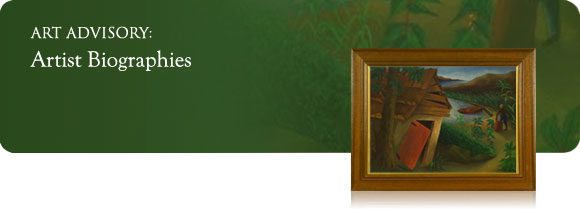
Alphabetical
A | B | C | D | E | F | G | H | I | J | K | L | M | N | O | P | Q | R | S | T | U | V | W | X | Y | Z
Kagan, Illya
Kahn, Wolf
Kandinsky, Wassily
Kaplan, Joseph
Katz, Morris
Kawecki, Jean
Kayali, Louyan
Kelly, Ellsworth
Kent, Rockwell
|
Kerr, Joffa
King, Mark
Kluge, Constantin
Knight, Louis Aston
Kollwitz, Kaethe
Konrad, Adolf Ferdinand
Koren, Shlomo
Kuniyoshi, Utagawa
|
|
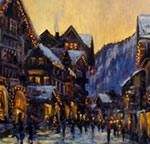
Illya Kagan
-
Late 20th - early 21st century American landscape painter
Illya Kagan was born into an artistic family. His mother was a needlepoint artist, while his father was a furniture designer. He started his artistic career early, and developed his style during his time at the Pomfret School, Skidmore College, and Lacoste Ecole de Beaux Arts. Kagan works from landscapes of the French West Indies, the mountains of Colorado, and the island of Nantucket. He works en plein air throughout the seasons, painting the changing light in broad brushstrokes that are the hallmark of his style.
|
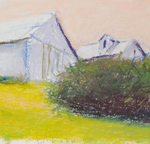
Wolf Kahn
b. 1927
German-born, New York affiliated abstract landscape and still life painter
Wolf Kahn was born in 1927 in Stuttgart, Germany. As a boy, he studied painting and drawing in Frankfurt, but in 1939 he was separated from his family during the war and was sent to Cambridge, England with other refugee children. The following year, he was reunited with his father in New York City. Here, he continued his education at the New York High School of Music and Art, graduating in 1945. From 1947-1949, Kahn attended Hans Hofmann’s School of Fine Art in New York. In 1950, he enrolled at the University of Chicago, earning his bachelor’s degree a year later. After a period of traveling across the continent and working in Oregon as a lumberjack, he returned to New York and resumed painting. In 1956, along with several other of Hofmann's former students, he helped found the Hansa Gallery, one of the first artists' co-operative loft galleries. Kahn was one of several young artists who were influenced by action painting but, at the same time, felt the need to reintroduce nature back into their art. His mature style revolves around the portrayal of landscapes in which he combines an expressive chromaticism (inspired by Milton Avery and Mark Rothko) with an emphasis on the dynamics of light and atmosphere. Much of his subject matter is drawn from the landscape in and around his farm in Vermont. Kahn has had numerous solo exhibitions, and is also the recipient of many awards and prizes, including a Guggenheim Fellowship (1966-67). Examples of Kahn's work can be found in most of America's major museums, including the Metropolitan Museum of Art, the Museum of Modern Art, and the Whitney Museum of American Art. (Source: Spanierman Gallery, LLC)
|
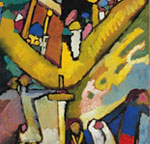
Wassily Kandinsky
1866-1944
Russian abstract painter and art theorist
Wassily Kandinsky was born in Moscow in 1866. From an early age, he was interested in color symbolism and psychology, something that continued as he grew. He was influenced by Monet’s use of expressive color. In 1896, he gave up a promising career teaching law and economics to enroll in art school in Munich. Much of his study was self-directed. He began with conventional themes and art forms, but was continuously forming theories derived from spiritual study and an intense relationship between music and color. Color became an expression of emotion rather than a faithful description of nature or subject matter. Kandinsky formed friendships ant artist groups with his contemporaries and frequently exhibited, taught art classes and published his ideas on theories of art. In WWI he was influenced by the constructivist movement, which was based on hard lines, dots and geometry. He later taught at the Bauhaus school in Berlin until 1933 when it was shut down by the Nazis. In 1937, he was featured in the “Degenerate Art Exhibition” in Munich, and about 57 of his works were confiscated by the Nazis. He died in France in 1944.
|
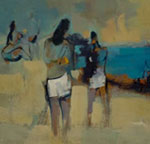
Joseph Kaplan
1900-1982
Russian born Massachusetts affiliated Modernist painter
Born in 1900 in Minsk, Russia, Kaplan studied at the Educational Alliance Art School, as well as the National Academy of Design, in New York City. Residing in Provincetown, Massachusetts and in New York City, Kaplan curated several exhibitions for five Midwestern museums, the Philadelphia Art Alliance and the Cape Cod Art Association in Hyannis, Massachusetts. He was a painter and printmaker whose primary subjects were landscapes and figures, and his works were widely exhibited. Kaplan was also a member of several art organizations, including the Artists League of America, Audubon Artists, and the Provincetown Art Association, where he served as honorary vice-president and trustee from 1955 until his death in 1982.
|
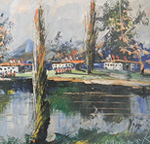
Morris Katz
1931-2010
Polish-American expressionist artist
Morris Katz was born in Galivia, Poland in 1932. When he was thirteen, he studied under Hanz Fokler of the Munich Academy. In 1949, he moved to the United States and took a job in carpentry while maintaining a sideline with his art. In 1956 he began painting with a palette knife instead of his brushes, and has also experimented with the use of rags and toilet paper. As of February 2007, over his career he had painted more than 280,000 paintings, holding the Guinness World Records as the world’s fastest painter and the world’s most prolific artist, even beating out Picasso for creating more paintings than any living or dead artist. Katz described his method as “Instant Art,” as he has completed entire paintings in as little as thirty seconds. More than 100 museums around the world include his paintings in their collections, including the Smithsonian.
|
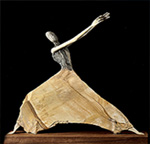
Jean Kawecki
b. 1926
English-born American citizen contemporary sculptor
Jean Kawecki was born in Liverpool, England in 1926. She began as a fashion designer, and had been drawing from a very young age. It was not until the 1970s that she began to sculpt seriously. With the death of her son in 1977, she created one work for him in mourning, but was unable to work for at least a year. Ultimately, Kawecki was able to find salvation in her sculpture. Her sculptures are known by their androgynous figures, often depicted with arms extended upward and holding another body. Strong vertical and horizontal thrusts are essential elements in her composition. Kawecki’s sculpture draws on her observations about life, her personal experiences and visions. Her forms are minimalist, with no room for embellishment of decoration, yet they are infused with references to life, movement, and gesture.
|
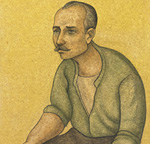
Louay Kayali
1934-1978
Syrian modern figural painter
Louay Kayali was born in Aleppo, Syria in 1934. He studied art at the Al-Tajhiz School and then the Accademia di Belle Arti in Rome, which he completed in 1961. He returned to Syria and met and studied with artist Wahbi Al-Hariri, who became his mentor. Kayali and another artist, Fateh Moudarres, represented Syrian modern art at the Venice Biennial. He died in 1978.
|
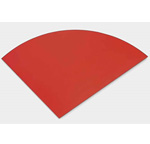
Ellsworth Kelly
b. 1923
American Minimalist painter and sculptor
Ellsworth Kelly was born in 1923 in Newburgh, NY. He studied at Pratt Institute from 1941-43, at which point he served in the military until 1945. After his service, he attended the School of the Museum of Fine Arts in Boston until 1947. The following year, Kelly went to Paris and studied European Abstraction and the avant-garde art until 1954. While there, he enrolled at the Ecole des Beaux-Arts, and discovered Romanesque art and architecture and Byzantine art. He was introduced to Surrealism and Neo-Plasticism, at which point he began experimenting with automatic drawing and geometric abstraction. In 1950, Kelly met Jean Arp and began to make shaped wood reliefs and collages, which were arranged according to chance. He soon began to make multi-panel paintings. It was during this time that he met many influential artists throughout Europe, including Constantin Brancusi, Alexander Calder, Georges Braque, Alberto Giacometti, and Joan Miro. Kelly’s first solo show took place in Paris in 1951 at the Galerie Arnaud. When he returned to the United States, he took up residence in New York City, living in a neighborhood among fellow artists. In 1956 he had his first show in NY at the Betty Parsons Gallery, and three years later participated in a group show at the MoMA. In 1977, his works were included in Documenta in Kassel. Kelly’s works are included in the collections of museums throughout the world, and have been in many retrospective exhibitions.
|
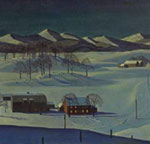
Rockwell Kent
1882-1971
American Contemporary illustrator, painter, designer
Rockwell Kent was born in Tarrytown, New York. He exhibited an early aptitude for art and later studied at William Merritt Chase’s summer art school in Shinnecock Hills, Long Island where he was offered a full scholarship. He went on to develop a highly successful career as a painter, printmaker and illustrator.
|
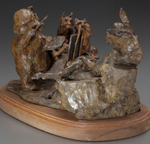
Joffa Kerr
b. 1935
American sculptor
Joffa was born in Nacodoches, Texas. She attended the University of Oklahoma and studied interior design and art. In 1982, Joffa began a serious art career and has since studied anatomy with several artists. She has attended a series of Scottsdale Artist School courses with noted sculptors Ken Bunn, Sherry Sander, Kent Ullberg, and Glenna Goodacre. Her work is presently available in galleries across the United States.
|
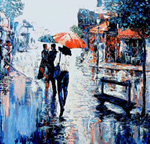
Mark King
b. 1931
Indian-born British Semi-impressionistic painter
Mark King was born in Bombay, India to British parents in 1931. After graduating from La Martiniére College in Calcutta, the sixteen-year-old King sailed to England to attend Bournemouth College of Art. There he studied painting, sculpture, architecture and theatre design. Subsequently, he spent seven years as the resident scenic designer at the Oxford Playhouse Theatre. In 1961, he decided to concentrate on painting, and he moved to Paris, where he studied at the École des Beaux-Arts and the Louvre. It was there that he developed his impressionistic style, influenced by the wealth of examples of European masters. A landscape painter in France, King began to expand his subject matter to include sports. With his work as a sports artist King found the camera an indispensable tool, and began to work from photographs. Since coming to America, Mark King’s work has found a wide acceptance across the United States. His artwork has exhibited around the world and he has been so fortunate to develop an identifiable style and technique, with a painterly brushstroke that maintains more realism than other post-war impressionists, that has an international appeal.
|
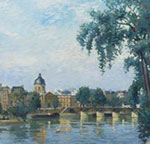
Constantin Kluge
1912-2003
French/ Russian Federation
Constantine Kluge was born to Russian parents in Riga, he emigrated to Manchuria in 1919. There he studied the local dialect which deepend his fascination with Chinese calligraphy. Kluge graduated from the French College in Shanghai and at age 19 decided to travel to France to study architecture.
At the Paris Fine Arts Academy he placed first of 400 in a drawing competition for the entrance course and continued in the architecture section until 1937.
Returning to Shanghai, he devoted himself to art, exhibiting his oil paintings of the Chinese countryside, seagoing junkets, and portraits. On a visit to Peking during the summer of 1943, he made the acquaintance of world-wide known scientist and philosopher Teilhard de Chardin, and drew his portrait. He then practiced architecture in Hongkong but returned to painting in oil full-time the following year.
Back in Paris, France in 1950, he exhibited in various galleries, and in 1962 was awarded the gold medal at the Salon des Artistes Francais. He work was exhibited every year at reputed Left-Bank galleries; in 1965 he was part of Artist Witnesses of their Time.
From 1963 onward he exhibited at the Wally Findlay Gallery locations in Paris, New York, Chicago, Palm Beach and Beverly Hills. Kluge published his autobiography in 1988, illustrated with 100 of his paintings.
|
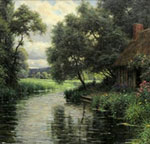
Louis Aston Knight
1873-1948
Impressionist landscape artist active in New York and France
Louis Aston Knight was born in Paris in 1873 to American parents. He studied under Lefebure, Robert-Fleury, and his father, Daniel Ridgeway Knight. His father’s American approach to painting affected Louis’ style as well. In 1894, he debuted at the Paris Salon. Knight is most famous for his French landscapes and did not paint figures as part of an agreement with his father to keep their work from looking too similar. His style shows a strong influence of the French Impressionists he befriended while in Paris.
|
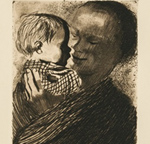
Kaethe Kollwitz
1867-1945
German etcher, lithographer, and woodcut printmaker
Kaethe was born in 1867 in Konigsberg, East Prussia (now Kalingrad in Russia). She studied art in Berlin and began producing etchings in 1880 In 1881 she married Dr Karl Kollwitz and they settled in a working class area of north Berlin. From 1898 to 1903 Kathe taught at the Berlin School of Women Artists, and in 1910 began to create sculpture. In 1914 her son Peter was killed in Flanders. The loss of Peter contributed to her socialist and pacifist political sympathies. Kaethe believed that art should reflect the social conditions of the time and during the 1920s she produced a series of works reflecting her concern with the themes of war, poverty, working class life and the lives of ordinary women. Kaethe became the first woman to be elected to the Prussian Academy of Arts, but in 1933, when Hitler came to power, she was expelled from the Academy. In 1936 she was barred by the Nazis from exhibiting, her art was classified as 'degenerate' and her works were removed from galleries. She had to leave Berlin in due to Allied bombing which destroyed her house and much of her work on November 23, 1943. Kollwitz died on April 22, 1945, two weeks before the end of World War II.
|
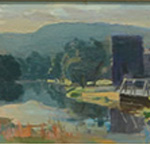
Adolf Ferdinand Konrad
1915-2003
American, New Jersey affiliated landscape and genre scene painter
Born in Bremen Germany, Konrad became an American scene painter who settled in Asbury, Flanders New Jersey. He studied at the Newark School of Fine and Industrial Art and the Cummington School in Massachusetts. He taught at Newark State College in 1972. The artist passed away in 2003.
|
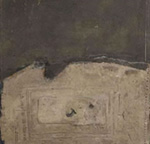
Shlomo Koren
b. 1932
Israeli Minimalist artist
Shlomo Koren was born in Cologne, Germany in 1932. He went to Israel in 1936 as a young boy and studied at the Bazalel School of Arts and Crafts in Jerusalem beginning in 1959. He has had many solo exhibits throughout Europe and the United Kingdom. Koren moved to Amsterdam in the 1960s, where he still resides, and taught at the Rietveld Academie.
|
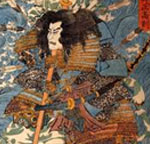
Utagawa Kuniyoshi, Ichiyusai
1797-1861
One of the great masters of the Japanese ukiyo-e style of woodblock prints and painting, Utagawa Kuniyoshi was a member of the Utagawa school. Kuniyoshi painted a variety of subjects, including: landscapes, beautiful women, Kabuki actors, cats, and mythical animals. He is known for depictions of the battles of legendary samurai heroes, and for his incorporation of Western representation in landscape painting and caricature.
Utagawa Kuniyoshi was born on January 1, 1979, originally named Yoshisaburo. He assisted his father’s business as a fabric designer, and at age twelve he proved his drawing talents, attracting the attention of the famous ukiyo-e print master Utagawa Toyokuni. He was admitted into the studio in 1811 and became one of his chief pupils, remaining an apprentice until 1814, at which time he was given the name Kuniyoshi. The artist failed to produce many works between 1818 and 1827, probably due to a lack of commissions and competition of other artists within the Utagawa school. However, it was during this time that he produced pictures of beautiful women (bijinga) and experimented with textile patterns. He died in April 1861 in Genyadana.
|
| |
|
| |
|
|


